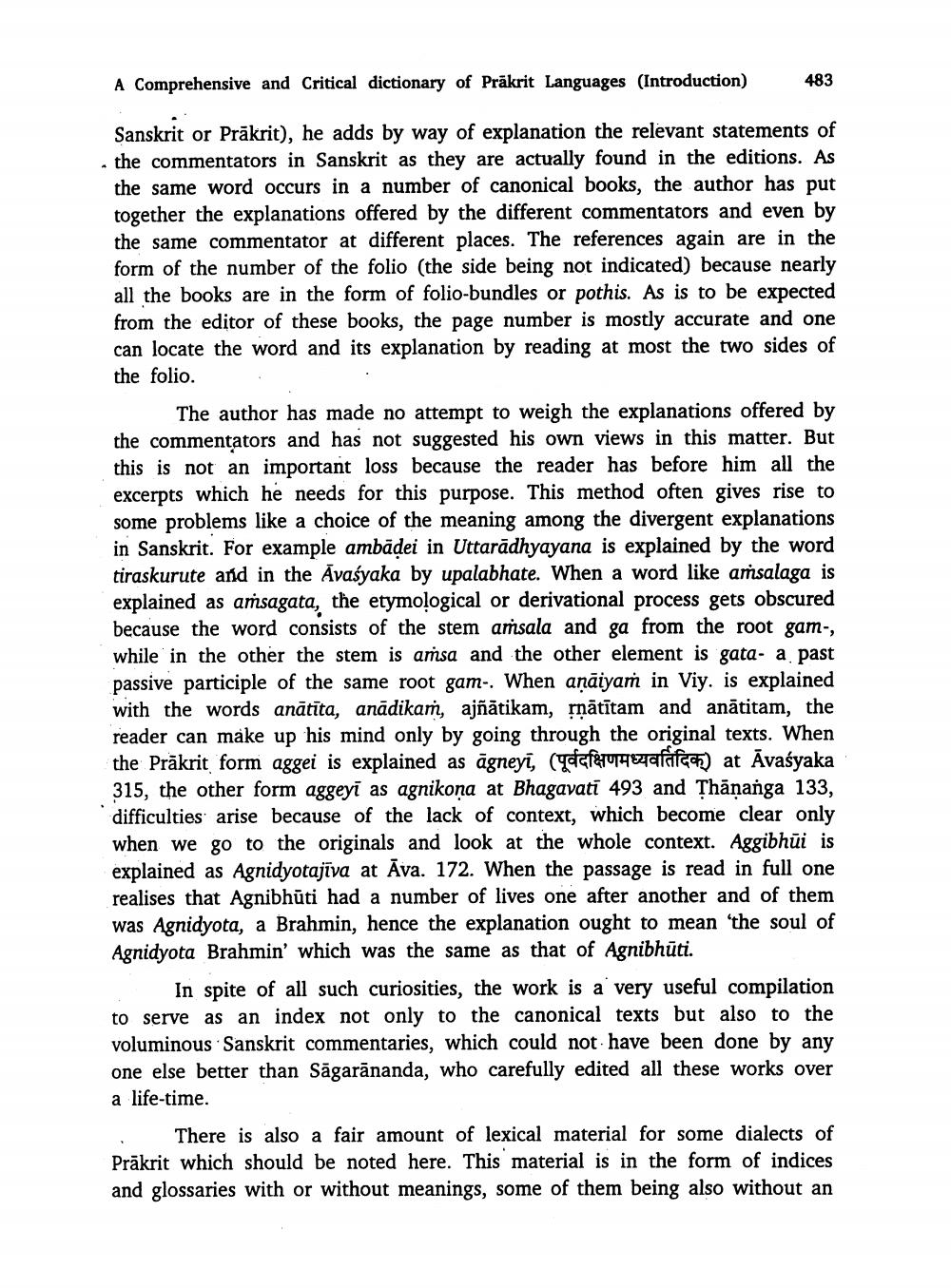________________
A Comprehensive and Critical dictionary of Prākrit Languages (Introduction)
483
Sanskrit or Prākrit), he adds by way of explanation the relevant statements of the commentators in Sanskrit as they are actually found in the editions. As the same word occurs in a number of canonical books, the author has put together the explanations offered by the different commentators and even by the same commentator at different places. The references again are in the form of the number of the folio (the side being not indicated) because nearly all the books are in the form of folio-bundles or pothis. As is to be expected from the editor of these books, the page number is mostly accurate and one can locate the word and its explanation by reading at most the two sides of the folio. .
The author has made no attempt to weigh the explanations offered by the commentators and has not suggested his own views in this matter. But this is not an important loss because the reader has before him all the excerpts which he needs for this purpose. This method often gives rise to some problems like a choice of the meaning among the divergent explanations in Sanskrit. For example ambādei in Uttarādhyayana is explained by the word tiraskurute and in the Āvaśyaka by upalabhate. When a word like aṁsalaga is explained as aṁsagata, the etymological or derivational process gets obscured because the word consists of the stem amsala and ga from the root gam-, while in the other the stem is amsa and the other element is gata- a past passive participle of the same root gam-. When añāiyam in Viy. is explained with the words anātīta, anādikam, ajñātikam, ļņātītam and anātitam, the reader can make up his mind only by going through the original texts. When the Prākrit form aggei is explained as agneyi, (Tageszafacer) at Avaśyaka 315, the other form aggeyi as agnikona at Bhagavati 493 and Thānanga 133, difficulties arise because of the lack of context, which become clear only when we go to the originals and look at the whole context. Aggibhūi is explained as Agnidyotajīva at Āva. 172. When the passage is read in full one realises that Agnibhūti had a number of lives one after another and of them was Agnidyota, a Brahmin, hence the explanation ought to mean the soul of Agnidyota Brahmin' which was the same as that of Agnibhūti.
In spite of all such curiosities, the work is a very useful compilation to serve as an index not only to the canonical texts but also to the voluminous Sanskrit commentaries, which could not have been done by any one else better than Sägarānanda, who carefully edited all these works over a life-time. . There is also a fair amount of lexical material for some dialects of
it which should be noted here. This material is in the form of indices and glossaries with or without meanings, some of them being also without an




